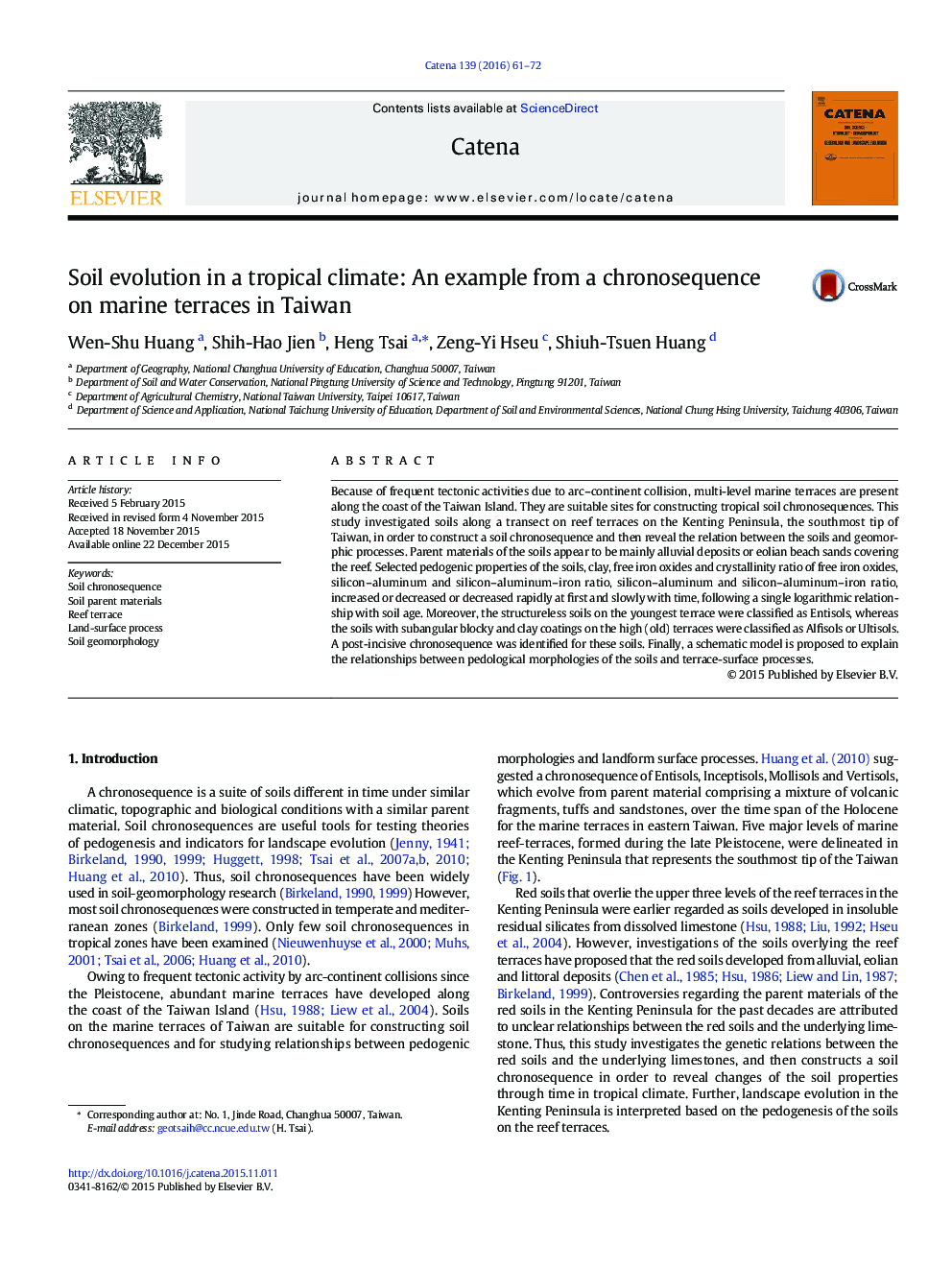| Article ID | Journal | Published Year | Pages | File Type |
|---|---|---|---|---|
| 4570944 | CATENA | 2016 | 12 Pages |
•We investigated soils on the reef marine terraces in the Kenting Peninsula, Taiwan.•The parent materials of soils are alluvial and eolian littoral deposits.•A tropical post-incisive chronosequence is suggested based on pedogenic degree.•Selected pedogenic properties show a logarithmic relationship with increasing age.•A schematic model suggests the relationships between pedological morphologies and the landform surface on the reef terraces.
Because of frequent tectonic activities due to arc–continent collision, multi-level marine terraces are present along the coast of the Taiwan Island. They are suitable sites for constructing tropical soil chronosequences. This study investigated soils along a transect on reef terraces on the Kenting Peninsula, the southmost tip of Taiwan, in order to construct a soil chronosequence and then reveal the relation between the soils and geomorphic processes. Parent materials of the soils appear to be mainly alluvial deposits or eolian beach sands covering the reef. Selected pedogenic properties of the soils, clay, free iron oxides and crystallinity ratio of free iron oxides, silicon–aluminum and silicon–aluminum–iron ratio, silicon–aluminum and silicon–aluminum–iron ratio, increased or decreased or decreased rapidly at first and slowly with time, following a single logarithmic relationship with soil age. Moreover, the structureless soils on the youngest terrace were classified as Entisols, whereas the soils with subangular blocky and clay coatings on the high (old) terraces were classified as Alfisols or Ultisols. A post-incisive chronosequence was identified for these soils. Finally, a schematic model is proposed to explain the relationships between pedological morphologies of the soils and terrace-surface processes.
